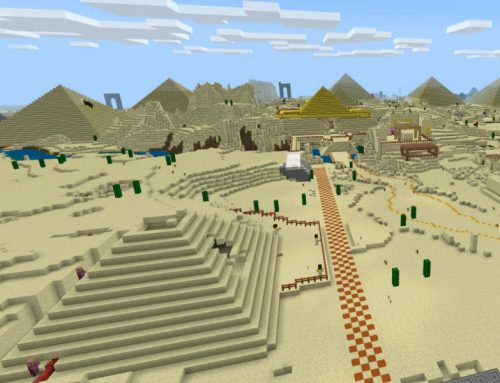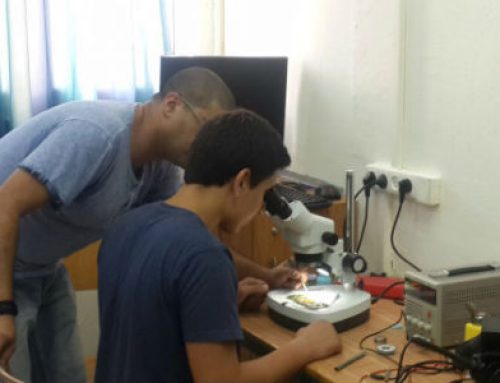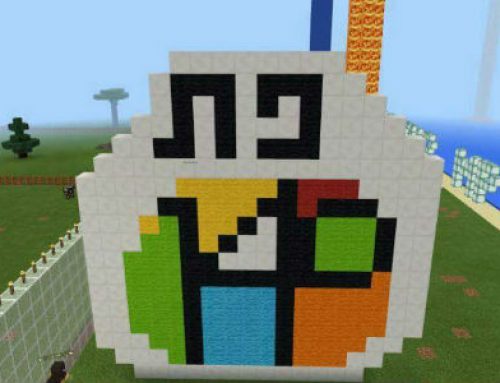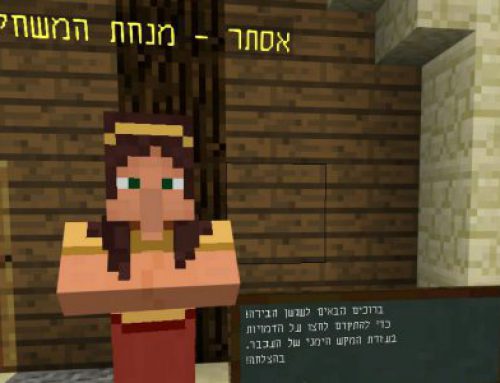Acting as a Youth and adult counselor for the past few years (four years in TopEdu), I’ve always strived to challenge my students in every lesson and create a meaningful learning experience for them. When counselling youths at-risk, enhancing their sense of competence and increasing their sense of enjoyment from the learning process is of an even greater importance.
As far as I am concerned, when guiding youth, the true measure of success is when students express a desire to be present in an additional lesson despite the peer pressure, ADHD, or past experiences that, more often than not, brought on negative feelings of disappointment or failure. It is also important to us that beyond the sense of empowerment, the newly acquired knowledge will remain in their minds and not just dissipate after two days.
Throughout my career as a counselor, I adopted a number of techno-pedagogical methods to teach and empower adolescents, one of which I would like to share with those who are not aware of, or who are aware of but do not fully comprehend its importance and contribution.
The game of Kahoot is one of the most convenient and creative techniques to enhance student’s learning experience and memory, through a quiz that sums up the subjects learned during the lesson. The game’s interface was launched in August 2013 in Norway and today it is played in different educational settings by over 50 million people around the world. It has been adapted for desktops, laptops, tablets and for smartphones and is played by people of all ages. Personally, I have used Kahoot as a platform to teach children in the 5th grade and staff in professional workshops, and the reactions were positive each and every time.
So how does it work? The teacher builds a game on the Kahoot website and his/her computer will be connected to a projector which will display the game on the board for all the students to see. When he/she presses PLAY a code will appear, which the students will type into the blank space that appears after they’ve entered the kahoot.it website from their phones. Typing the code enables them to enter the game and choose a temporary nickname which will be theirs throughout the game. The students answer the questions using their phones and the results are displayed on the teacher’s board in front of them.
It is simple and easy to work with Kahoot! Every teacher can create different games with ease within minutes:
A detailed and easy-to-use tutorial on how to use Kahoot to create games below:
A brief explanation: The game is created by entering the Kahoot website.
You begin by creating a username and clicking on the ‘Create’ tab on the upper right-hand side.
Most people are familiar with the use of Kahoot to create quizzes alone, but there are other tools that can be used. We will briefly review the additional game options that are available in Kahoot, and the educational process that the game promotes.
1. Jumble- Arrange a puzzle by steps. This method is convenient when we want to teach about different processes, stages or actions. When formulating the question, we raise the subject and the students are required to arrange the answers in the correct order.
2. Quiz- A multiple choice quiz where the teacher must enter a minimum of two possible answers and determine which one is correct. After each question you can see how many students selected each answer and the score table is displayed.
3. Discussion- Resembles a multiple choice quiz with four possible answers, but unlike the quiz mentioned above, at the end of the competition each student is asked questions about the questionnaire: How did you enjoy the game? How much did you learn? Would you recommend it to others? These results are then presented to the teacher and the classmates (in an anonymous fashion). This enables the teacher to create an additional discussion about the subject, the difficulties that arose, and the way it made the students feel.
4. Survey- Uploads questions in the form of a multiple choice quiz which the students need to answer. The survey can incorporate the subjects of the lesson or personal topics. When the survey is completed, the teacher has the option to save the results, granting him\her access to information regarding the distribution of answers in the classroom.
In each of the game options you can define the audience you wish to target, the language of the questionnaire, the time limit for each question and more. You also have the option to incorporate videos or images to form a basis for the questions.
When you’ve completed preparing the game you should save it of course (by clicking the save button) and then you can play a demo game by clicking ‘preview’. This option will cause the screen to split in two, and will show you how the game will be displayed for the students, while at the same time showing you how it will look on the board.
When you are prepared to play the game with your students- click ‘play’ and instruct your students to enter the kahoot.it link or search “play kahoot” in google, and enter the code displayed.
There are two main ways to incorporate Kahoot into the learning process:
During a lesson: It is widely known that the creating a long-lasting memory is achievable after laboring over a specific subject and working hard to understand it. While our goal is to teach them, simply feeding our students with information is not necessarily the most meaningful way to get them interested and remember the subject at hand.
Let us take for example a simple process we wish to teach our students: How to perform computer operations using three basic steps: input, processing and output. We would also like to teach them what components enable each step. We may begin the learning process by asking a question in a quiz, or by using a survey and asking "What does input mean?" Or begin a classroom discussion about inputs and then instruct them to use logic and choose which of the following components enable the ‘input’ step (a keyboard, mouse, touch screen, etc.).
Between raising the question and receiving their answers, it is recommended to give the students at least between 1-2 minutes to deal with the questions (either alone or in groups of 2-3 students) and to investigate the answer on the Internet, thus enabling them to give a complete and comprehensive answer, as opposed to a single-worded one. This process can be done simultaneously while working with the game to teach any theoretical subject or topic we are attempting to get the students to remember or understand, even when they claim that "it does not interest them".
The fact that understanding the subject requires that the student be active and participate, automatically causes him\her remember the subject better.
2. At the end of the learning process: “you should work hard and listen because in the end there’s a competition”- this is the key sentence. If your students don’t get excited about the competition, an alternative is to offer a prize in advance, such as bonus points on the next exam for the first three places, positive feedback on the grade certificate or given on parents' day, and more. It is wise to explore and understand what attracts the students and what will motivate them to actively take part in the lesson.
You should dedicate enough time at the end of the lesson by planning ahead accordingly. That way, the students won’t be stressed to go home and will really concentrate on the questions. The advantage of using Kahoot at the end of the learning process is that it enables you to obtain a clear picture of the students' understanding of the lesson’s material and to examine whether they paid attention during the lesson. In the course of the game, it is recommended to keep an eye on what is going on in the classroom and to identify ‘green’ or ‘red lights’ in the class’ dynamics: students who dominate and “judge” others, students who usually do not participate in the lesson but still succeed in answering correctly etc.
In conclusion, the game brings the lesson to an end at its peak, with the students in full concentration and expressing interest and with you, the teacher, full of new and positive energy.
There are many additional ways to incorporate technology into lessons and to gamify the learning process (see the article on gamification of learning processes in the Petah Tikva Municipal Minecraft Project), however this is one of the simplest, most convenient methods that has been successful in thousands of classrooms around the world. Even if you are “technologically challenged” so to speak, you can always ask one of your students for help and try out this amazing platform which will have your students leave the classroom with a smile.
If you’re interested in incorporating additional technological tools, you’re welcome to contact us for advice, counselling or to propose the development of new techno-pedagogical tools for you.
Good luck!





